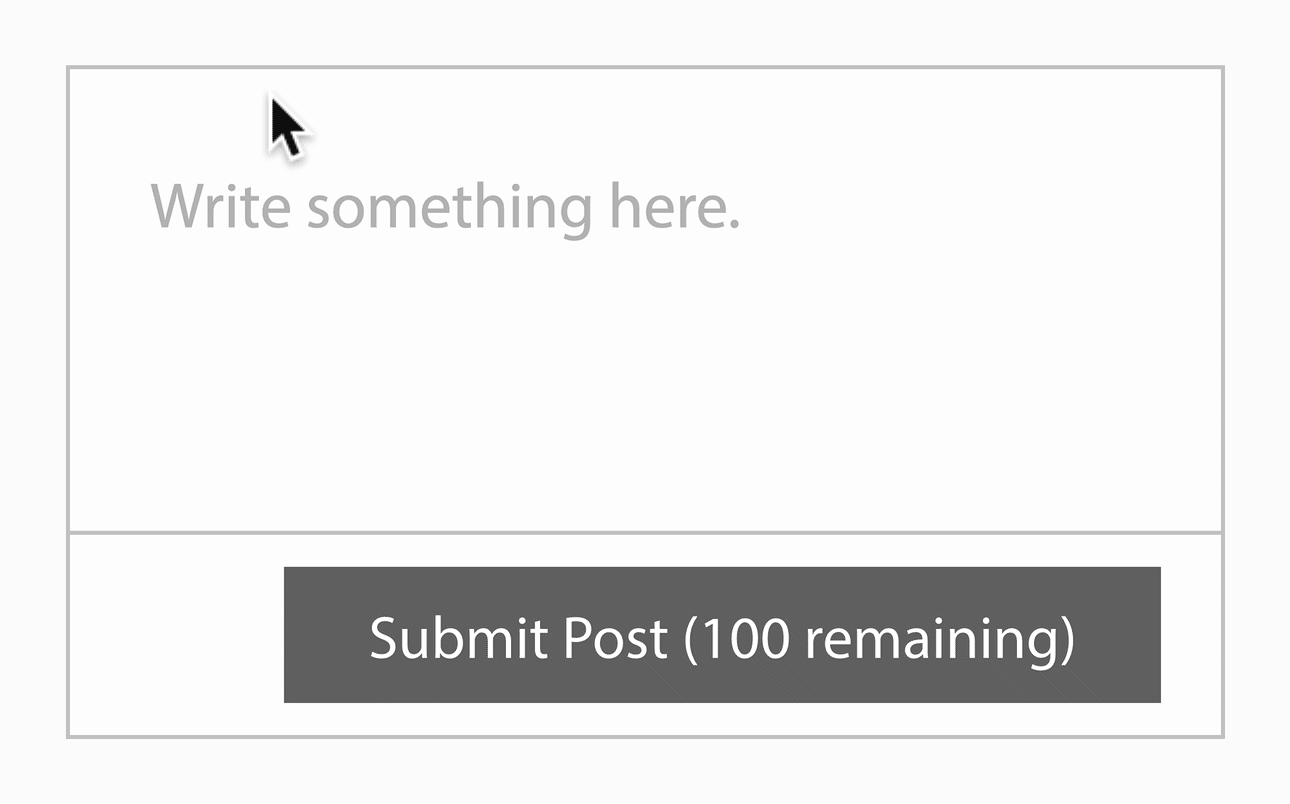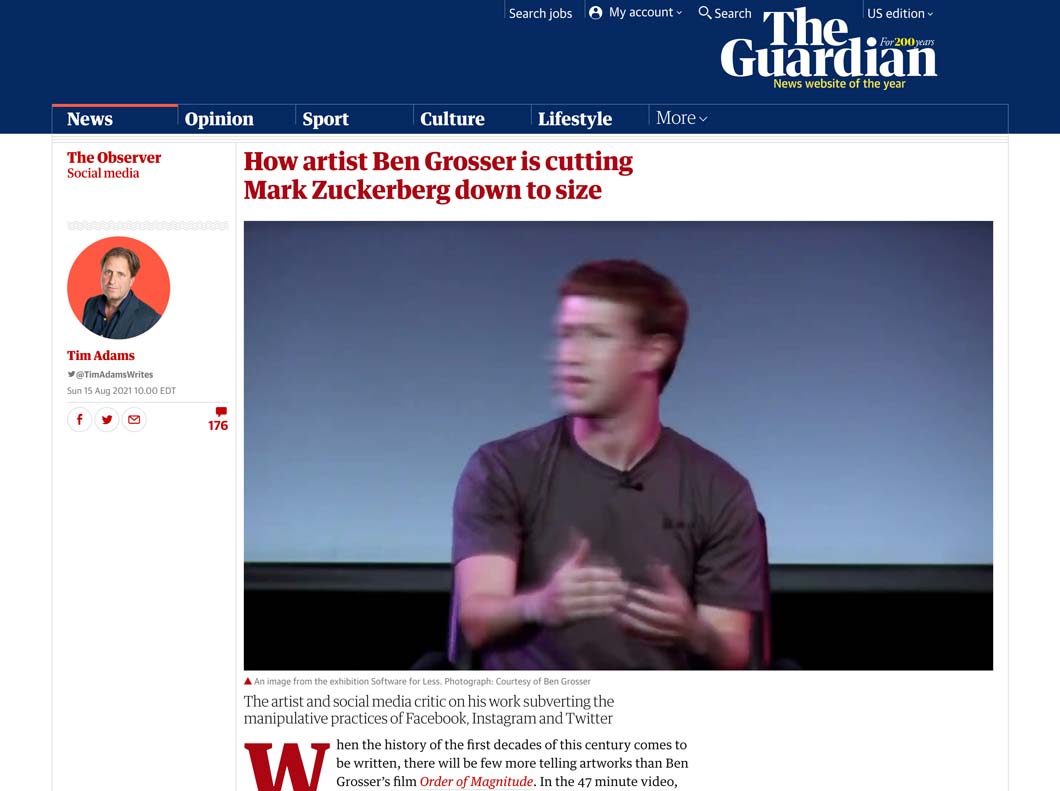Visit
Description
Despite their lofty mission statements, today’s big social media platforms are centrally focused on one singular concept: more. These capitalistic software machines are designed to stoke a pervasive and ever-increasing cycle of production and consumption for the purposes of growth and profit. To accomplish this they leverage data and scale to produce signals and interface patterns that keep us engaged, promising connection and joy in exchange for increasing shares of our time and attention. The platforms embed within us the idea that our own sociality is best evaluated and understood through quantity. They reconfigure our sense of time in ways that can make minutes or hours ago seem old. And their personalized feeds teach our brains that the only content worth watching or reading is that which we can already imagine. In its tireless pursuit of users and data and wealth, big social media sacrifices human agency and potential on the altar of more.
But what if social media wasn’t engineered to serve capitalism’s need for growth? How might online collective communication be different if our time and attention were treated as the limited and precious resources that they are? Minus is an experiment to ask these questions, a finite social network where users get only 100 posts—for life. Rather than the algorithmic feeds, visible “like” counts, noisy notifications, and infinite scrolls employed by the platforms to induce endless user engagement, Minus limits how much one posts to the feed, and foregrounds—as its only visible and dwindling metric—how few opportunities they have left. Instead of preying on our needs for communication and connection in order to transform them into desires for speed and accumulation, Minus offers an opportunity to reimagine what it means to be connected in the contemporary age. The work facilitates conversation within a subtractive frame that eschews the noise and frenzy for a quieter and slower setting that foregrounds human voices, words, and temporalities. Though it may be disorienting at first to navigate an online social space devoid of the signals and patterns Silicon Valley uses to always push for more, Minus invites us to see what digital interaction feels like when a social media platform is designed for less.
GIFs
Images

The Minus post submission form for a user with 0 posts remaining. The form no longer works. (screenshot)

User names are always accompanied by a single, dwindling metric: how many posts they have remaining (screenshot)

Each post displays vague timestamps and records how many posts that user had left at the time (screenshot)
Exhibitions
- Software for Less (solo), arebyte Gallery, London, UK
- Software for Less (solo), Aksioma Institute for Contemporary Art, Ljubljana, Slovenia
- Living by Protocol, Harvard Art Museum, Cambridge, US
- Information Wants to be Free?, ADM Gallery, Singapore
- E2LIT, Electronic Literature Arts Festival, Collegio Gallio, Como, Italy
- Piksel Festival, Kunstskolen i Bergen, Bergen, Norway
Press
- The Guardian / Observer (UK): How artist Ben Grosser is cutting Mark Zuckerberg down to size.
- Ocula Magazine: Ben Grosser Wants to Mess with Your Socials
- CLOT Magazine (UK): Insight: Ben Grosser’s ‘Software for Less’, a space to reveal what the digital could become
- RTÉ (Ireland Public Radio) — Culture File: Software for Less (Parts 1/2/3)
- Franceinfo (French Public Radio): Ben Grosser a créé Minus, l’anti-Facebook qui limite le nombre de publications à 100 par utilisateur à vie
- la Repubblica (Italy): Minus è il social network che vuole farvi passare meno tempo online
- Fast Company (US): This new social network allows you 100 posts—for life
- Hyperallergic (US): An Exhibition That Helps Us Rethink Our Relationship to Facebook
- Gizmodo (US): Here’s an Idea: Everyone Only Gets 100 Posts
- The Atlantic: The Subversive Genius of Extremely Slow Email
- Mashable (Italy): C’è un social in cui puoi pubblicare solo 100 post in tutta la tua vit
- Forbes (Brazil): Minus: qual a possibilidade de a nova rede de posts limitados dar certo
- Usbek & Rica (France): Les plateformes nous conditionnent à les voir comme des parties prenantes de nos vies
- Input Magazine: Minus is the anti-Twitter that grants you 100 posts for life
- Thai Rath Plus (Thailand): ต่อให้ ‘โซเชียลเน็ตเวิร์ก’ มินิมอลลง ก็ไม่ลดความหดหู่ บทเรียนจาก Minus งานทดลองของศิลปินอเมริกัน.
- FC Bnext (Taiwan): 只讓你發 100 篇貼文!社群媒體 Minus 限制發文次數,為現代社會帶來哪些反?
- [ANTI]MATERIA (Mexico): Semana 295_1 Software for Less
- ok diario (Spain): Minus, la red social que te deja publicar 100 posts y luego se cierra
- ifanr (China): 在这个社交平台,你一生只能发 100 条推文|大航海家
- B9 (Brazil): Nova rede social se inspira no Facebook, mas permite apenas 100 posts para toda vida
- Tivi (Finland): Houkuttaisiko häipyä Facebookista? Ei mainoksia, ei algoritmeja, mutta…
- Nexo (Brazil): ‘Minus’: o projeto de arte que propõe uma rede social finita
- Kronen Zeitung (Austria): Soziales Netzwerk begrenzt Posting-Anzahl auf 100
- nlc (Hungary): A legújabb közösségi oldalon egész életedben csak százszor posztolhatsz
- Boing Boing: Minus is a finite social network where [you] have a limit of 100 posts—for life
- La Gazzetta del Pubblicitario (Italy): 100 post a vita: ecco Minus, il social media al confine tra esperimento mediatico e opera d’arte
- Cybersalon (UK): Wish you were here — Review of Ben Grosser’s new show ‘Software for Less.’
- Newsweek (US): Alternatives to Facebook: Taking the ‘Big’ Out of ‘Big Tech’
Credits
Minus was created by Ben Grosser and commissioned by arebyte Gallery (London, UK) as part of the solo exhibition Software for Less.
Currently, research about Minus is supported through Grosser’s 2022-23 fellowship at the Institute for Rebooting Social Media at the Berkman Klein Center for Internet and Society at Harvard University.




